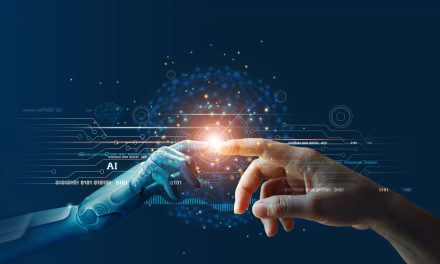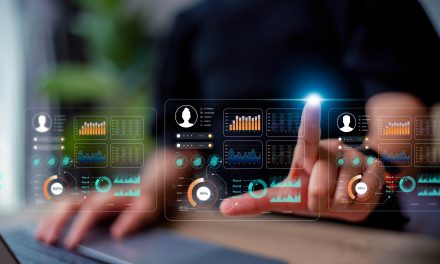Artificial intelligence (AI) is a field of computer science that has gained significant attention in recent years. AI is the ability of machines to simulate intelligent behavior, such as learning, problem-solving, and decision making, that is typically associated with humans. AI has the potential to revolutionize many aspects of our lives, from healthcare and transportation to finance and entertainment.
Understanding artificial intelligence requires a basic knowledge of computer science and data analysis. AI is based on the idea that machines can learn from data, identify patterns, and make decisions with minimal human intervention. The historical background of AI dates back to the 1940s when researchers began exploring the possibility of creating machines that could think and reason like humans. Since then, AI has evolved into several types, including machine learning, deep learning, and natural language processing, each with its own unique characteristics and applications.
Key Takeaways
- Artificial intelligence is the ability of machines to simulate intelligent behavior.
- AI is based on the idea that machines can learn from data, identify patterns, and make decisions with minimal human intervention.
- AI has evolved into several types, including machine learning, deep learning, and natural language processing, each with its own unique characteristics and applications.
Understanding Artificial Intelligence
Artificial Intelligence (AI) is a rapidly growing field that has the potential to revolutionize the way we live and work. At its core, AI is the ability of machines to perform tasks that would normally require human intelligence, such as learning, reasoning, and problem-solving. AI systems can be designed to perform a wide range of tasks, from recognizing speech and images to driving cars and making financial predictions.
AI systems typically rely on machine learning algorithms that enable them to learn from data and improve their performance over time. These algorithms use statistical techniques to identify patterns in data and make predictions based on those patterns. As more data is fed into the system, the algorithms become more accurate and can make better predictions.
There are several different types of AI systems, including:
- Reactive machines: These systems can only react to specific inputs and do not have the ability to form memories or use past experiences to inform their decisions.
- Limited memory machines: These systems can use past experiences to inform their decisions, but only for a limited period of time.
- Theory of mind machines: These systems can understand the mental states of other entities, such as humans, and use that understanding to interact with them more effectively.
- Self-aware machines: These systems have a sense of self-awareness and can understand their own internal state, which allows them to adapt to changing situations more effectively.
AI has the potential to transform a wide range of industries, from healthcare and finance to transportation and manufacturing. However, there are also concerns about the potential negative impacts of AI, such as the displacement of workers and the potential for biases to be built into the algorithms. As AI continues to evolve, it will be important to address these concerns and ensure that AI is developed and used in a responsible and ethical manner.
Historical Background of Artificial Intelligence
Artificial Intelligence (AI) has a rich and fascinating history that dates back to ancient times. The idea of intelligent machines and robots has been around for centuries, but it wasn’t until the mid-20th century that AI became a formal field of study.
The seeds of modern AI were planted by philosophers who attempted to describe the process of human thinking as the mechanical manipulation of symbols. In the 17th century, the French philosopher René Descartes proposed the concept of “animal machines,” suggesting that animals were nothing more than complex machines that could be understood and replicated. This idea laid the foundation for the development of AI.
The term “artificial intelligence” was first coined in 1956 by John McCarthy, Marvin Minsky, Nathaniel Rochester, and Claude Shannon at the Dartmouth Conference. This conference is widely regarded as the birthplace of AI as a formal field of study. The researchers proposed that “every aspect of learning or any other feature of intelligence can in principle be so precisely described that a machine can be made to simulate it.”
In the decades that followed, AI research experienced several ups and downs. In the 1960s and 1970s, AI researchers focused on “symbolic AI,” which involved programming computers to manipulate symbols and represent knowledge. However, progress was slow, and many researchers became disillusioned with the field.
In the 1980s and 1990s, AI research shifted towards “connectionism,” which involved building artificial neural networks that could learn from data. This approach proved to be more successful, and it led to breakthroughs in areas such as speech recognition and computer vision.
Today, AI is a rapidly evolving field that is transforming many industries, including healthcare, finance, and transportation. With advances in machine learning, natural language processing, and robotics, AI is poised to revolutionize the way we live and work in the years to come.
Types of Artificial Intelligence
Artificial Intelligence (AI) can be classified into three types: Narrow or Weak AI, General or Strong AI, and Superintelligence.
Narrow or Weak AI
Narrow or Weak AI refers to systems that are designed to perform specific tasks and are not capable of performing tasks beyond their design. These systems are programmed to perform a single task or a set of tasks and can only operate within a specific domain. Examples of Narrow or Weak AI include voice assistants like Siri and Alexa, recommendation systems like Netflix and Amazon, and autonomous vehicles.
General or Strong AI
General or Strong AI refers to systems that can perform any intellectual task that a human can. These systems can reason, understand, and learn any intellectual task that a human can. General or Strong AI can learn and adapt to new situations and can perform tasks that are beyond their original programming. The development of General or Strong AI is still in progress, and researchers are working on developing systems that can perform more complex tasks.
Superintelligence
Superintelligence refers to the hypothetical future AI systems that surpass human intelligence in every way. These systems can perform tasks that are beyond human comprehension and can solve problems that are currently unsolvable. Superintelligence is still a theoretical concept, and its development is still in the distant future.
In conclusion, AI can be classified into three types: Narrow or Weak AI, General or Strong AI, and Superintelligence. Each type of AI has its own characteristics, capabilities, and limitations. While Narrow or Weak AI is currently the most common type of AI, the development of General or Strong AI and Superintelligence is still in progress.
Applications of Artificial Intelligence
Artificial Intelligence (AI) has numerous applications across various industries. AI is the ability of machines to perform tasks that typically require human intelligence, such as visual perception, speech recognition, decision-making, and language translation. In this section, we will explore the applications of AI in Healthcare, Finance, Transportation, and Education.
Healthcare
AI is transforming the healthcare industry by enabling doctors to provide better diagnosis and treatment. AI algorithms can analyze patient data, medical records, and clinical research to identify patterns and make predictions. Healthcare providers can use AI-powered tools to improve patient outcomes, reduce costs, and increase efficiency.
Some examples of AI applications in healthcare include:
- Medical imaging: AI algorithms can analyze medical images to detect diseases such as cancer, Alzheimer’s, and heart disease.
- Drug discovery: AI can help researchers identify new drugs and predict the efficacy of existing ones.
- Virtual assistants: AI-powered chatbots can provide patients with personalized health advice and support.
Finance
AI is revolutionizing the finance industry by improving decision-making, reducing fraud, and automating routine tasks. Financial institutions can use AI to analyze large amounts of data and identify patterns that humans may miss. AI-powered tools can also help financial institutions comply with regulations and reduce risk.
Some examples of AI applications in finance include:
- Risk management: AI algorithms can analyze financial data to identify potential risks and make predictions.
- Fraud detection: AI can help detect fraudulent transactions and prevent financial crimes.
- Investment management: AI-powered tools can help investors make better investment decisions by analyzing market trends and predicting future performance.
Transportation
AI is transforming the transportation industry by enabling autonomous vehicles, improving traffic flow, and reducing accidents. AI algorithms can analyze traffic data in real-time to optimize routes and reduce congestion. Self-driving cars can use AI to navigate roads and avoid obstacles.
Some examples of AI applications in transportation include:
- Autonomous vehicles: AI-powered self-driving cars can improve road safety and reduce traffic congestion.
- Route optimization: AI algorithms can analyze traffic data to optimize routes and reduce travel time.
- Predictive maintenance: AI can help predict when vehicles need maintenance, reducing downtime and repair costs.
Education
AI is transforming the education industry by personalizing learning, improving student outcomes, and automating administrative tasks. AI-powered tools can analyze student data to identify learning gaps and provide personalized feedback. Teachers can use AI to create customized lesson plans and assessments.
Some examples of AI applications in education include:
- Personalized learning: AI algorithms can analyze student data to provide personalized learning experiences.
- Automated grading: AI can help grade assignments and provide feedback to students.
- Virtual tutors: AI-powered chatbots can provide students with personalized support and guidance.
Overall, AI has numerous applications across various industries, from healthcare and finance to transportation and education. As AI technology continues to advance, we can expect to see even more innovative applications in the future.
Ethical Considerations in Artificial Intelligence
As artificial intelligence (AI) continues to advance, it is important to consider the ethical implications of its use. AI systems have the potential to greatly benefit society, but they can also be used in ways that violate people’s rights or cause harm. Below are some of the key ethical considerations in AI:
Bias and Discrimination
AI systems are only as unbiased as the data they are trained on. If the data contains biases, the AI system will learn and perpetuate those biases. This can lead to discrimination against certain groups of people. For example, if an AI system is trained on data that is biased against women, it may discriminate against women in its decisions. To address this issue, it is important to ensure that the data used to train AI systems is diverse and representative of all groups.
Privacy and Security
AI systems often collect and process large amounts of personal data. This data can include sensitive information such as health records, financial information, and location data. It is important to ensure that this data is kept secure and that people’s privacy is protected. AI systems should be designed with privacy and security in mind, and data should only be collected and used for specific purposes with the consent of the people involved.
Transparency and Accountability
AI systems can be complex and difficult to understand. This can make it difficult to determine how decisions are being made and who is responsible for those decisions. To address this issue, AI systems should be designed to be transparent and explainable. People should be able to understand how decisions are being made and what factors are being taken into account. Additionally, there should be clear lines of accountability for the decisions made by AI systems.
Human Control
AI systems should be designed to augment human decision-making, not replace it. Humans should have ultimate control over the decisions made by AI systems, and there should be clear processes in place for humans to override or modify those decisions if necessary. Additionally, AI systems should be designed with fail-safes to prevent unintended consequences or harm.
In conclusion, ethical considerations are essential to the development and deployment of AI systems. By addressing issues such as bias and discrimination, privacy and security, transparency and accountability, and human control, we can ensure that AI is used in ways that benefit society while also respecting people’s rights and values.
Future Prospects of Artificial Intelligence
As technology continues to evolve, the future prospects of artificial intelligence are vast and exciting. Here are a few potential areas where AI could make a significant impact:
-
Healthcare: AI has the potential to revolutionize healthcare by improving diagnosis accuracy, predicting disease outbreaks, and developing personalized treatment plans. For example, AI-powered chatbots can help patients with mental health issues by providing support and guidance.
-
Transportation: With the development of self-driving cars, AI will play a crucial role in the transportation industry. Self-driving cars have the potential to reduce accidents, traffic congestion, and fuel consumption.
-
Education: AI can be used to personalize education for students. By analyzing student data, AI can identify areas where a student is struggling and provide additional resources to help them succeed.
-
Cybersecurity: As cyber threats continue to increase, AI can be used to detect and prevent cyber attacks. AI-powered systems can analyze large amounts of data to detect anomalies and identify potential threats.
-
Customer Service: AI-powered chatbots can provide customers with 24/7 support and assistance. By automating simple tasks, customer service representatives can focus on more complex issues.
While the future prospects of AI are exciting, it’s important to consider the potential risks and ethical concerns. As AI continues to develop, it’s crucial to ensure that it’s used in a responsible and ethical manner.
Conclusion
In conclusion, artificial intelligence (AI) is the ability of machines to perform tasks that typically require human intelligence, such as learning, problem-solving, and decision-making. AI has made remarkable progress in the past few years, and it is having a real-world impact on people, institutions, and culture.
AI is transforming the world in many ways, from improving healthcare and education to enhancing transportation and communication. It has the potential to revolutionize industries and create new opportunities for businesses and individuals alike.
However, AI also presents some challenges and risks, such as job displacement, biased algorithms, and ethical concerns. It is important to ensure that AI is developed and used responsibly, with appropriate regulations and safeguards in place.
Overall, AI is a powerful tool that can help us solve complex problems and improve our lives, but we must approach it with caution and care. As AI continues to evolve, it will be interesting to see how it shapes our future and what new opportunities and challenges it will bring.
Frequently Asked Questions
What is artificial intelligence and how does it work?
Artificial intelligence (AI) refers to the ability of machines to perform tasks that typically require human intelligence such as visual perception, speech recognition, decision-making, and language translation. AI works by using algorithms and statistical models to analyze large amounts of data and identify patterns, which are then used to make predictions or decisions.
What are some examples of artificial intelligence in use today?
AI is already being used in many industries and applications such as self-driving cars, virtual personal assistants, fraud detection, and voice recognition. Some popular examples of AI-powered products include Siri, Alexa, and Google Assistant.
How is artificial intelligence different from machine learning?
Machine learning is a subset of AI that involves using algorithms to automatically learn patterns in data and improve over time without being explicitly programmed. AI, on the other hand, encompasses a broader range of technologies that enable machines to perform tasks that typically require human intelligence.
What are the different types of artificial intelligence?
There are three main types of AI: narrow or weak AI, general or strong AI, and artificial superintelligence. Narrow AI is designed to perform a specific task, while general AI can perform any intellectual task that a human can. Artificial superintelligence refers to machines that can surpass human intelligence in all areas.
What are the benefits and risks of artificial intelligence?
The benefits of AI include increased efficiency, accuracy, and productivity in many industries. However, there are also risks associated with AI such as job displacement, bias, and potential misuse of the technology.
How is artificial intelligence impacting various industries?
AI is having a significant impact on many industries such as healthcare, finance, and transportation. In healthcare, AI is being used to improve diagnoses and treatment plans, while in finance, it is being used for fraud detection and risk management. In transportation, self-driving cars are expected to revolutionize the industry.



